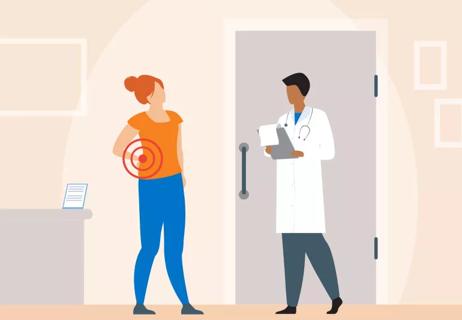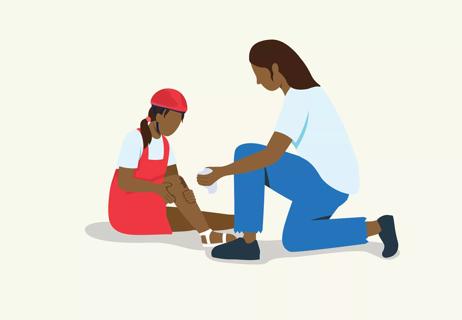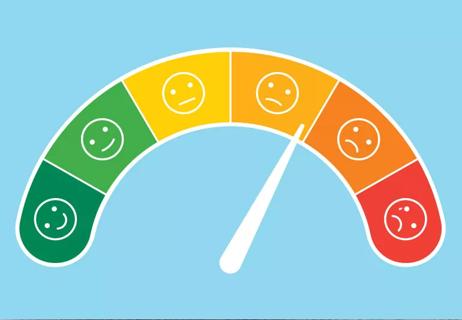Research shows that the pain experience differs for women and men

For more than two decades now, research on sex and pain has been a topic of major scientific and clinical interest. More recent research is expanding into how the overall pain experience differs for women compared with men.
Advertisement
Cleveland Clinic is a non-profit academic medical center. Advertising on our site helps support our mission. We do not endorse non-Cleveland Clinic products or services. Policy
Richard W. Rosenquist, MD, Chairman of Cleveland Clinic’s Department of Pain Management, explains that multiple factors play a role in how we experience pain. This includes genetics, social status, exercise and information processing in the brain. And for women, hormones, puberty, reproductive status and menstrual cycle also affect pain threshold and perception, he notes. Here is what the research tells us about the female experience with four common areas of pain.
The National Institutes of Health (NIH) cites many studies that have looked into the prevalence of musculoskeletal pain in men and women. In one study that spanned 17 countries on six continents with more than 85,000 participants, results showed that the occurrence of chronic pain is higher among females than males. Other studies from Europe and Australia also indicated that chronic musculoskeletal pain is more common in females than males.
Under review were several specific types of musculoskeletal pain, including back pain, whole body pain, fibromyalgia and osteoarthritis. As women age, they experience more compression fractures and vertebral changes, such as scoliosis, loss of bone mass and osteoarthritis than do men. And any one of these conditions puts women at a higher risk of breaking a bone during a fall, which can add to their pain.
Advertisement
A number of studies have found a higher prevalence of abdominal pain in women. The NIH reports that there is approximately a 3-to-1 female-to-male ratio in the diagnosis of irritable bowel syndrome in the United States. This condition is characterized by recurring symptoms of abdominal pain and problems with bowel habits.
Headache is one of the most common pain conditions. One review of findings from more than 60 studies concluded that the prevalence of headaches and migraines is higher for women than men. In the NIH American Migraine Study II, which included more than 29,000 adults, it was estimated that the one-year prevalence of migraine in the U.S. is 18% in women and 7% in men.
According to the Women’s Health Office of the U.S. Department of Health and Human Services, migraines are most common in women between the ages of 20 and 45. And women more than men report more painful and longer-lasting headaches with more associated symptoms, including nausea and vomiting.
For women suffering from chronic pelvic pain, absent a physical injury, childbirth or identifiable procedural cause, there is significant potential for a history of intimate partner violence. According to the Centers for Disease Control and Prevention, 1 in 4 U.S. women have experienced intimate partner violence, physical violence or rape compared to one in seven men. Data suggest that this can contribute to pain conditions.
Cleveland Clinic pain psychologist Jill Mushkat Conomy, PhD, points out the following, specific to women and pain: “For women, issues of family stress, weight gain and sexuality can be front and center when it comes to the onset of pain. When meeting with patients, I share a long list of biological, psychological and social issues to consider to get the conversation started.”
Issues include everything from experiencing physical trauma to having feelings of depression. Once the areas of concern are pinpointed, a pain psychologist will often use cognitive behavioral therapy (CBT) to help patients rethink their pain and find different ways to manage and live with it.
Advertisement
Learn more about our editorial process.
Advertisement

Arthritis, migraines and endometriosis are common causes of chronic pain

Not all signals of physical pain actually make it to our brains — and you have some power over it

Good pain or bad? Know the different kinds and when to seek help

Therapy helps pain sufferers get their sleep

Tips to help your pain management specialist help you

Find relief by keeping a neutral spine, trying a medium-firm mattress and using pillows for support

Chemo cold caps may help you keep more of your hair during therapy

Avoid high-mercury fish and processed meat, and go easy on salt and caffeine

If you’re feeling short of breath, sleep can be tough — propping yourself up or sleeping on your side may help

If you fear the unknown or find yourself needing reassurance often, you may identify with this attachment style

If you’re looking to boost your gut health, it’s better to get fiber from whole foods